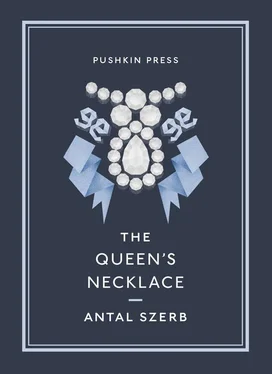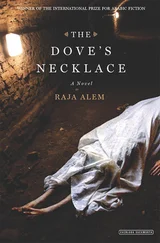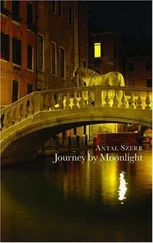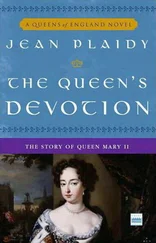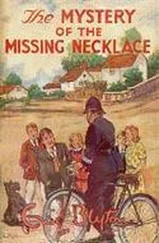But now, as is proper, we must say some brief closing words about the subsequent fate of our dramatis personae — brief, because their later careers are of little real significance. The royal party are of course excepted: after the conclusion of our immediate narrative, they really did step into the centre stage of history, as their portion of suffering and martyrdom increased. The reader doubtless knows their story; so we will speak only of the others.
Jeanne de la Motte escaped to England in 1787. For a short while she lived off the éclat of the necklace trial, her malicious memoirs and supposed persecution. Thereafter she sank into the London underworld, fell into dreadful poverty, and in 1791, perhaps in one of her hysterical fits, threw herself out of a window and died. Her husband lived on. Little is known of his fate, but it could hardly be much to his credit. He ended his days in 1831, in a beggars’ hospital in Paris. The cursed Nibelung treasure had not brought him luck, or even wealth — but rather the “death or deep shame” predicted in Szerdahely’s verses.
Prince Rohan spent two years of banishment in his former cloister, then was allowed to return to Strasbourg just as the Revolution broke out. As a prelate he was also a member of the Estates General. He was later charged with counter-revolutionary practices, but never appeared before any court. From 1793 onwards he lived in his Ettenheim diocese as a Prince of the Holy Roman Empire, one of his many titles. When in year nine of the Republic the Pope signed a Concordium with the new French state which gave the Assembly the right to appoint bishops, Rohan resigned his office and returned to his chateau, where he lived in retirement until his death in 1803, a proud, taciturn and forgotten relic of the Ancien Régime.
As a consequence of the sensational trial, Nicole d’Oliva’s market value soared. Aristocratic young suitors competed for her favour. Its first recipient, if only out of gratitude, was her clever young lawyer Blondel. Later, from a wide field, she chose Toussaint de Beausire, the father of her child. Carlyle records that he became a well-known informer and played a significant role in the Revolution.
Mme Campan served her mistress with touching and heroic loyalty. Following the Queen’s death, she founded a girls’ school in St Germain-en-Laye, after which Napoleon put her in charge of an academy for young ladies at Écouen. It is an irony of fate that Mme Campan, who had the good fortune to live through the Revolution, the end of the monarchy and finally the return of the Bourbons to the throne, was eventually dismissed from her post by her former employers. At which point she wrote her superb memoirs, to set the record straight about the Queen. She died in 1822.
For Cagliostro and his wife, fate still had years of trouble in store. The trial proved a tragic turning point in the magician’s life; thereafter his road led downwards. His weeping disciples followed the Great Kophta to Boulogne, where he set sail and crossed the Channel. In London his luck ran out. Nothing he started went well for him.
Business matters took him back to France for a short while. He brought an action against de Launay, the Governor of the Bastille, and Chenon, the police inspector who had sealed off his home while he was in prison. He sued them for some 150,000 livres for cash and jewellery stolen from it through their negligence, and a further 50,000 livres in compensation for ill-treatment. Unfortunately, as he acknowledged in his notebook, all his possessions had been recovered without loss, and he had on numerous occasions declared that he had been very satisfied with the way he had been treated in prison. He did not win his case.
In London he made an attempt to renew his miracle-doctoring, but somehow the locals proved less susceptible to his cures. He tried to get in touch with his former students of the occult, and picked up the threads of his Freemasonry, but the sensible English simply made fun of the absurd, exaggerated gestures of the Italian.
And then to top it all he made a formidable enemy, in the person of Théveneau de Morande. Morande was a member of the lowest underworld of French journalists and pamphleteers based in London. But by this time he was no longer producing pamphlets. He had no need to — the poacher had turned gamekeeper. The well-paid spy of the French King, he edited the Courrier de l’Europ e, a French-language paper printed in London as a source of information for the French government about British public opinion.
Cagliostro became Théveneau’s favourite theme. He could attack whoever he chose and the French government loved it: it is quite possible that his attempt to discredit Cagliostro was carried out on instructions from Paris. The journalist brought a detective-like zeal and thoroughness to his inquiry into Cagliostro’s former doings, especially those in London, and including his disgraceful little court cases. No detail was spared. Amongst other things, scorn was poured on his claim that his relations the Arab sheikhs controlled the numbers of marauding lions and tigers by raising pigs on fodder laced with arsenic (the gradually increased doses would permeate their flesh without harming them, but would be strong enough to kill any wild animal that devoured them).
Cagliostro replied to all this with rather surprising wit. He disdainfully (and wisely) ignored references to his minor, more squalid, misdemeanours, and wrote instead that he had so much enjoyed M de Morande’s French style that he would like to meet him personally, and to that end was inviting him to breakfast on 9th November. He would like Monsieur the editor to bring the wine and other provisions, while he, Cagliostro, would provide the meat, a suckling piglet he had reared according to his method. Morande would be entrusted with killing and preparing the pig and would be free to eat whichever part he found most to his taste. “The next day four things would be possible. Either both of us would be dead, or neither of us; or I would be dead and not you; or you would be dead but not I. The first three results would be a win for you, the fourth a win for me. But I will lay 5,000 guineas that you would be dead the next day and I would be hale and hearty.”
Morande backed away from this. For all he knew, he said to himself, Cagliostro might be right. With typical eighteenth-century credulity, he considered that such a wily (and fat!) rascal might well be immune to poison. So he suggested that perhaps either a dog or a cat should try the pig instead of himself. To that Cagliostro replied with biting scorn:
“You propose that a meat-eating animal should stand in for you at the breakfast. It would certainly represent you well. What other carnivore so aptly reflects what you are among men?”
To his shame, Théveneau de Morande withdrew, but Cagliostro’s victory was a Pyrrhic one. As a result of what they had learnt during the dispute, his followers mobbed him and tried to strangle him. He rapidly decided to leave London. He went off with his wife’s diamonds, leaving her behind without a penny. In revenge she spread it abroad that Théveneau de Morande had been right on all counts.
Once again Cagliostro travelled around Europe, but this was a very different journey from the one he had made in his heyday. Everywhere his infamy went before him, and poverty was his constant companion. He was driven out of Switzerland; then the Austrians expelled him from Trient, where he had met a well-disposed archbishop who in time might well have become a second Rohan to him.
Meanwhile his wife joined him. The lovely Lorenza was now desperately homesick. After so many years of restless wandering she longed to be back with her family in Rome, where she dreamt of a quiet, simple married life. Perhaps she hoped that one day Cagliostro would become a respectable citizen, give up his visionary dreams and perhaps even get himself a job. Her weary, ageing, persecuted husband finally gave in to her wishes — gave in, and stepped into the jaws of the wolf.
Читать дальше
